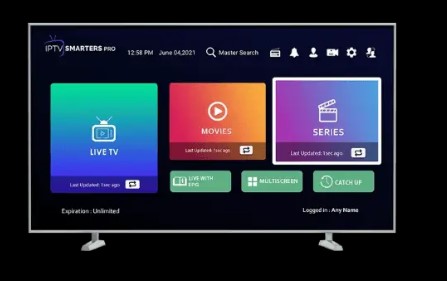In today’s rapidly evolving media landscape, IPTV Canada has emerged as a transformative force in how Canadians access television content. By 2025, traditional cable and satellite models continue to lose ground to internet-based streaming services, with IPTV leading the way due to its flexibility, affordability, and technological sophistication. IPTV, which stands for Internet Protocol Television, enables users to stream content directly over broadband internet rather than relying on coaxial cables or satellite dishes. This change not only offers greater convenience for viewers, but also opens the door to enhanced customization, diverse programming options, and seamless integration with smart devices and home networks. As more Canadians shift toward digital consumption of entertainment, IPTV Canada plays a central role in shaping the future of television. This article delves into what IPTV Canada truly is, how it functions in 2025, and what both consumers and service providers can expect from this continually evolving ecosystem.
What Is IPTV?
Definition and Concept
At its core, IPTV refers to the delivery of television programming using internet protocols. This means content is streamed directly to a user’s device over the web, rather than transmitted through satellite signals or cable infrastructure. The IPTV model is based on a client-server system, where users request specific content from centralized servers maintained by IPTV providers. These providers host a wide variety of television channels, movies, and on-demand services, allowing viewers to watch what they want, when they want it. This approach contrasts with the more linear model of traditional TV, where programming is scheduled and viewers must tune in at specific times. By leveraging broadband connections and digital technologies, IPTV Canada provides a modern alternative that suits the demands of today’s tech-savvy audiences.
How IPTV Differs from Cable or Satellite
Unlike cable or satellite services that rely on physical infrastructure to transmit signals, IPTV works via packet-switched networks similar to those used for sending data online. This allows for more efficient use of bandwidth and enables additional features that enhance user experience, such as pause and rewind capabilities, interactive program guides, and multi-screen viewing. Moreover, IPTV Canada services can be accessed on a broad range of devices, including smart TVs, laptops, tablets, smartphones, and dedicated IPTV boxes. This flexibility empowers users to tailor their entertainment experience to fit their daily routines, whether they’re watching at home, during commutes, or while traveling.
How IPTV Works in Canada
Step-by-Step Workflow
The operation of IPTV Canada is a streamlined yet sophisticated process that involves several technical components working in harmony. First, live television broadcasts or pre-recorded content are digitized and compressed using modern codecs, which make the files smaller and faster to transfer without significant loss in quality. This content is then uploaded to high-capacity servers operated by IPTV providers. These servers store the data and organize it into content libraries that users can access through intuitive interfaces. When a user initiates playback, their device sends a request to the IPTV server, which responds by streaming the content in real time using internet protocols.
In this system, content delivery is managed through IP multicast or unicast streams, depending on whether the user is watching live programming or on-demand videos. Packet routing is handled by Content Delivery Networks (CDNs), which ensure the fastest possible transmission by locating the server closest to the user’s geographic region. To maintain quality and minimize buffering, IPTV services also incorporate adaptive bitrate streaming — adjusting video quality dynamically based on available bandwidth. Finally, middleware software acts as the bridge between the user interface and the backend infrastructure, enabling personalized recommendations, search functionality, and account management.
The State of IPTV Canada in 2025
Technological Landscape
By the year 2025, IPTV Canada has solidified its role as a mainstream entertainment option, driven by rapid advances in internet infrastructure, cloud technology, and smart device integration. High-speed internet is now available in nearly all regions across Canada, thanks to national investments in fiber-optic networks and the rollout of 5G. These developments have eliminated many of the bottlenecks that previously hindered IPTV growth, especially in rural and remote areas. Furthermore, cloud computing has become the backbone of content distribution, allowing providers to store vast libraries of programs and deliver them instantly without the need for local storage devices.
Another major advancement is the integration of artificial intelligence into IPTV Canada platforms. Using sophisticated algorithms, AI now helps recommend personalized content to users, improving engagement and satisfaction. This means that viewers not only receive content suggestions based on what they’ve watched, but also benefit from insights gathered from viewing habits across the country. As IPTV becomes more intuitive and user-centric, consumers enjoy an experience that’s more immersive, tailored, and aligned with their preferences than ever before.
Legal vs. Unauthorized IPTV
Legal IPTV Canada Services
In Canada, IPTV services are subject to strict regulatory oversight by the Canadian Radio-television and Telecommunications Commission (CRTC). Legal providers must comply with copyright laws, data protection standards, and broadcasting guidelines. As of 2025, the majority of Canadian households opt for licensed IPTV services offered by major telecommunications companies such as Bell, Rogers, Telus, and VMedia. These services offer guaranteed quality, customer support, and legitimate access to local and international content. Additionally, users benefit from features like cloud DVR, video-on-demand (VoD), parental controls, and multi-device access, all within a secure and stable ecosystem.
Risks of Unlicensed IPTV
In contrast, unauthorized IPTV services — sometimes marketed as “free” or “low-cost” alternatives — pose serious risks to users. These platforms often distribute pirated content without the rights holder’s permission, violating Canadian copyright law. Users of such services may face penalties, and their data could be exposed to cyber threats due to lack of proper encryption. Moreover, service reliability is often poor, with frequent buffering, broken links, and minimal customer support. While some Canadians may be drawn to these services due to cost considerations, the long-term risks often outweigh any short-term savings.
Devices Supported by IPTV Canada
Compatible Device Types
A key feature of IPTV Canada in 2025 is its universal device compatibility. Viewers can access their content across a diverse array of hardware, depending on their lifestyle and preferences. Smart TVs, for instance, are increasingly preloaded with IPTV applications, eliminating the need for external devices. Android boxes remain popular among tech-savvy users due to their affordability and customization options. Smartphones and tablets offer mobile streaming for users who prefer entertainment on the go, while laptops and desktop PCs provide access through browser-based portals. Some telecom companies also provide proprietary set-top boxes that streamline IPTV access with features like voice search, interactive menus, and remote cloud recording.
This multi-platform approach to IPTV Canada empowers consumers to move seamlessly between devices, picking up where they left off regardless of where they are or which screen they’re using. It also supports the growing trend toward multi-screen households, where different family members can watch different content simultaneously without conflicts or delays.
IPTV Canada Subscription Models
In 2025, IPTV providers offer a wide range of subscription models tailored to varying needs, budgets, and viewing habits. Monthly plans provide the most flexibility for users who don’t want long-term commitments, while annual subscriptions come at discounted rates and often include bonus features such as increased cloud storage or access to premium channels. Pay-per-view models allow users to buy individual shows or events without signing up for a full package, which is particularly popular for sporting events or movie releases. Family bundles are designed for households with multiple viewers, offering profile management, simultaneous streaming capabilities, and child-friendly settings.
Pricing can vary widely depending on the provider and package selected. Basic plans usually start around CAD $15 per month, offering access to essential channels and standard definition streaming. Mid-tier plans fall between CAD $25–$45, providing high-definition content and some VoD services. Premium packages cost upwards of CAD $60 per month, featuring 4K ultra-HD streaming, cloud DVR, multiple screen access, and exclusive content. As consumers become more discerning, IPTV Canada providers continue to innovate with more flexible and transparent pricing options.
Features and Benefits of IPTV Canada
Advantages Over Traditional TV
When compared to traditional television services, IPTV Canada stands out for its convenience, customization, and advanced features. For starters, IPTV does not require physical installation of satellite dishes or extensive cabling. All users need is a stable internet connection and a compatible device. The ability to pause, rewind, and fast-forward live broadcasts gives users unprecedented control over their viewing experience. Additionally, on-demand libraries allow access to thousands of programs at any time, breaking away from fixed programming schedules.
Customization is another key benefit. IPTV platforms offer smart recommendation engines that learn from user behavior to suggest relevant content. Interactive guides make browsing easier, and users can create profiles and personalized watchlists. Language preferences, subtitles, and regional content filters further enhance accessibility for Canada’s diverse population. Collectively, these features give IPTV Canada a clear advantage over legacy systems that are static and limited in scope.
Challenges Faced by IPTV Canada
Despite its rapid growth and innovation, IPTV Canada still faces certain challenges that impact service delivery and user adoption. One major issue is regional content licensing, which can limit what viewers in certain provinces or territories are able to access. Although most services attempt to secure national rights, some content remains geo-restricted due to contractual obligations. Additionally, network congestion can affect service quality, particularly during peak hours when multiple users are streaming high-definition content simultaneously.






